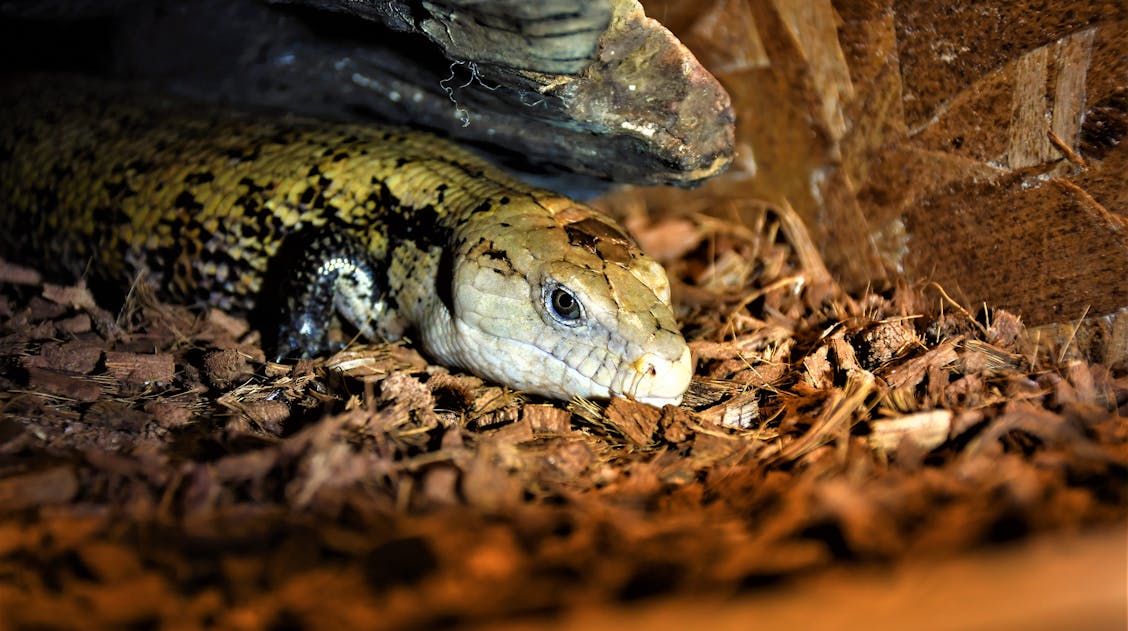
Relocation of Endangered Lizards to Secure a Sustainable Future
Climate change is intensifying at a significant rate.
According to a report by the World Meteorological Organisation (WMO), it’s forecast that the annual average global mean near-surface temperature between the years 2025 and 2029 is set to be between 1.2°C and 1.9°C higher than the average over the years 1850-1900. Moreover, the report also predicted that there is an 80% chance that at least one year in this time frame will be warmer than the current warmest year on record (2024).
Every significant increase in temperature heightens the risk of extreme weather such as heatwaves, increased rainfall, and droughts. In addition, this extreme weather and overall warming of the planet encourages heating of the ocean, resulting in melting of sheet ice, sea ice and glaciers, and rising sea levels. All of these extreme weather events and effects of climate change have a huge impact on the planet and its inhabitants. Climate change is a big driver of habitat loss and impacts ecosystems all over the planet.
Scientists from Australia who recently published in the Open Access journal Biology researched how climate change and habitat loss are affecting endangered lizards endemic to South Australia.
Climate change impact on reptiles
Reptiles are massively impacted by climate change and are at high risk of extinction due to its effects. This is because they are endothermic, meaning that they rely on the environment to regulate their body temperature. Because of this, they depend on behavioural mechanisms to regulate their body temperature, such as basking in the sun, shading in cooler areas, and adjusting their body posture to increase or decrease skin exposed to the sun. Moreover, they also rely on physiological behaviours to regulate their body temperature and to be able to carry out basic bodily functions.
The physical mechanisms include heat absorption from warm surfaces, heat dissipation by increasing blood flow to the skin, releasing heat and regulating brain temperature that triggers behavioural responses.
Lizards are fascinating creatures that play an important multifaceted role in ecosystems, as they can act as both predator and prey. Additionally, they can also influence plant growth and help to control insect populations. Therefore , it’s important to protect them from the dangers of climate change.
The researchers from Australia recognised this and expanded on their previous research by investigating the behavioural response to microclimate in three varied populations of a particular species of lizards: pygmy bluetongues or Tiliqua adelaidensi.
Protecting the endangered pygmy blue-tongue lizard
Pygmy bluetongues are an endangered burrow-dwelling skinks which are endemic to South Australia. They are an elusive species of lizards which are difficult to detect as they use camouflage to blend into their environment. This species has a low dispersal ability; they are not able to change habitat easily, as they are very adapted to a specific environment. These environments include empty spider burrows in isolated grassland pockets in the mid-north of Australia. They depend on these burrows for shelter, to be able to regulate their temperature and for hunting. Because of this, they are very susceptible to climate change effects and are at higher risk of extinction.
“We need to understand how this species, which are highly dependent on body temperature, adapt to cooler and often wetter seasons in these new environments,” – Ms Trewartha, author of the study.
The researchers predicted, using previous research, that the translocation of this species of lizard from three diverse latitudes and climatic ranges would result in variations in their behavioural responses to microclimate temperature and humidity.
Investigating behaviours of the pygmy bluetongue lizard
In the current study, the researchers compared the behavioural responses of three lizard populations to withstand different microclimates in South Australia.
Three geographically isolated wild lineages of pygmy bluetongue lizards were chosen to represent the latitudinal spread of the known current pygmy bluetongue range across the Mid North region of South Australia. These includednorthern (Jamestown), mid-range (Burra) and southern (Kapunda). Thirty-two individual lizards were chosen from these three populations and moved to a site south of the southern population.
The translocation site consisted of 25 x 25 m enclosures per lineage, which allowed for the natural wild behaviour of the lizards to be carried out in these enclosures. The researchers monitored the behaviour of wild lizards as well as those in the translocation sites for 3 months. In addition, the researchers also analysed environmental data from the translocation site and the wild, which involved taking 30-minute readings of temperature and relative humidity.
“With high biodiversity loss, translocation to ‘future-suitable’ sites is becoming increasingly urgent for the conservation of numerous reptile species,” explains Professor Gardner, author of the study.
Microclimate effects on the behaviour of pygmy bluetongue lizards
The researchers found that latitudinally varied lineages of pygmy blue-tongue lizards differed in their behavioural response to microclimatic variation. Moreover, they also found differences in behaviour between the translocated southern lineage lizards and the translocated northern lineage lizards. They found that the southern lizards showed significantly less daily activity and were active at lower temperatures and higher humidity than the northern lizards. Additionally, they observed that the southern lizards were less apprehensive around human observers and allowed them to approach closer as the base of the burrow’s humidity increased.
Northern lizards were more alert to the researchersand were quicker to retreat into their burrows in both the wild and the translocation sites. The researchers note that these findings highlight the importance of including climatic variability when investigating response to microclimate and have positive implications for mitigation planning for the northern lineage. However, they suggest that more time is needed for the lizards to acclimate to a new environment, estimating that it could take more than two years, depending on the latitude of origin.
They also suggest that some lineages may be limited in their ability to adjust to increasing temperatures seen with climate change, but these species may cope with translocation as a migration strategy in the long term.
“So far, these three populations are showing various responses to their new locations, but behavioural variations may not be detrimental in the long term and may potentially aid animals in acclimatising to changed environments to optimise their chance of survival.” – Professor Gardner, author of the study.
If you’re interested in reading more about how climate change is impacting endothermic species or would like to submit research on the subject, please see the Biology Special Issue: Coping with Temperature Increase Induced by Climate Warming: Trends in Ectothermic Species










